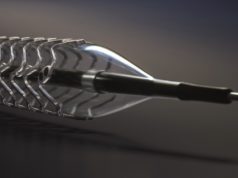
An economic analysis of data from the PARTNER 3 randomised trial, comparing transcatheter aortic valve implantation (TAVI) and surgical aortic valve replacement (SAVR) in patients with severe aortic stenosis and low surgical risk, found that despite higher up-front procedural costs, at two-year follow-up, quality-adjusted life expectancy was greater and total costs were lower with TAVI.
This was the headline finding delivered by David J Cohen (director of clinical and outcomes research at the Cardiovascular Research Foundation and director of Academic Affairs for St Francis Hospital and Heart Center, New York, USA) during a late-breaking trial session at the Transcatheter Cardiovascular Therapeutics annual meeting (TCT 2021; 4–6 November, Orlando USA and virtual). Cohen told TCT attendees that the findings show that at two years, TAVI was cost-effective for low-risk patients.
Previous studies have demonstrated that TAVI is cost effective compared with medical therapy for patients with severe aortic stenosis and extreme surgical risk and compared with SAVR for patients at intermediate and high surgical risk. Based on the results from recent trials, including PARTNER 3, TAVI has been approved for low-risk patients in the USA. Currently, there is little evidence as to whether TAVI is cost effective for low-risk patients.
Between March 2016 and October 2017, 979 patients in the USA were enrolled in the PARTNER 3 trial and randomised to either TAVI using the Sapien 3 valve (Edwards Lifesciences; n=492) or SAVR (n=487). Of these, 485 underwent TAVI and 444 underwent SAVR. During the index hospitalisation, TAVI resulted in significant reductions in procedure duration (53 vs. 198 minutes) as well as ICU (0.7 vs. 2.6 days) and non-ICU length of stay (1.2 vs. 3.7 days, all p<0.001), Cohen detailed. Between discharge and six-month follow-up, TAVI also resulted in fewer rehospitalisations and less use of rehabilitation services—benefits that were largely sustained through two years.
Costs were assessed based on a combination of resource utilisation (for the initial TAVI and SAVR procedures) and linked Medicare claims for all other costs through two years. In the study population, index hospitalisation costs were US$47,196 for TAVI and US$46,606 for SAVR (a difference of US$591). Between hospital discharge and two years, follow-up costs were less for TAVI compared with SAVR (US$19,638 vs. US$22,258, a difference of US$2,620).
Overall, the total combined two-year cost was lower for TAVI versus SAVR (US$66,834 vs. US$68,864, a difference of US$2,030), Cohen detailed. Two-year quality-adjusted life expectancy was greater with TAVI than SAVR (1.71 vs. 1.66 quality-adjusted life years, p=0.06)—driven by early benefits in both quality of life and survival. Although long-term outcomes are unknown at present, assuming there are no long-term differences in survival or cost, TAVI was projected to be an economically dominant strategy (lower cost, better outcome) with a 95% probability of being cost-effective compared with SAVR.
“Data from the PARTNER 3 trial show that for patients with severe aortic stenosis and low surgical risk, TAVI is cost-saving compared with SAVR at 2 year follow-up and is projected to be highly cost effective over a lifetime horizon—as long as there are no major differences in late mortality between the two strategies,” said Cohen. “Given the importance of long-term outcomes in these projections, extended follow-up through at least 10 years will be critical to validate these findings.”
In a press conference following the presentation of the data, Luca Testa (IRCCS Policlinico S. Donato, Milan, Italy) was asked to comment on his view of the data. He remarked that the findings regarding cost effectiveness of the TAVI procedure in low-risk patients were reassuring, but said that further data on the durability of the procedure would be key.
“The picture is still incomplete, because in order to have a final word we need to see the concept and what is the application of the durability concept,” Testa said. “In other words, we have a lot of data concerning the surgical valves around eight years, 10 years, 12 and even 15 years and more. This is not the case for TAVI. In other words I would like to see and wait for a final word coming from long term-follow up, but for the rest of it, I am reassured because what we are doing looks cost effective from an economic perspective, but also reassuring in terms of long term follow-up.”












